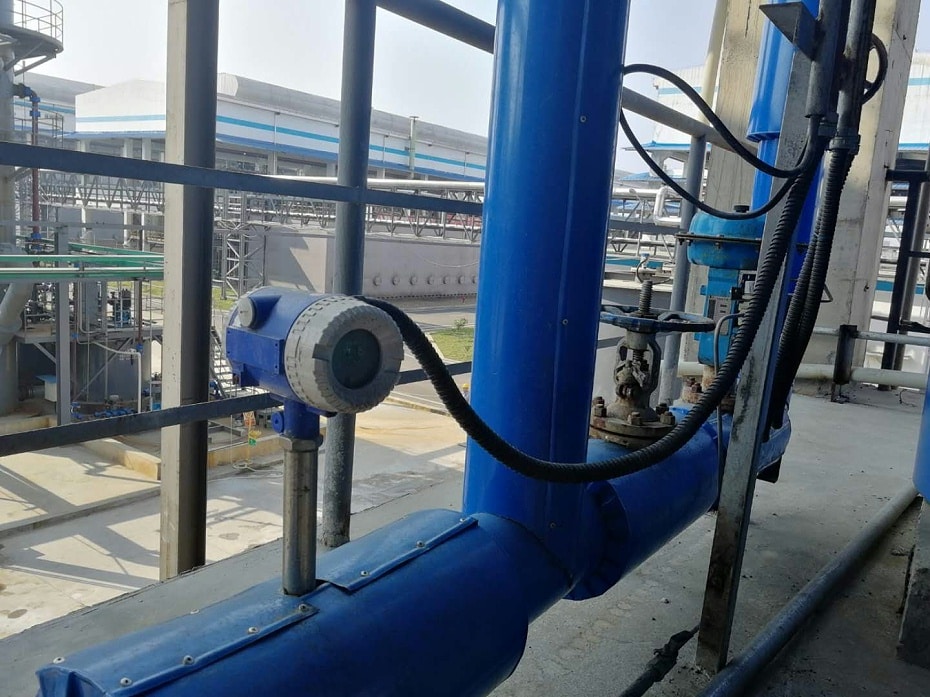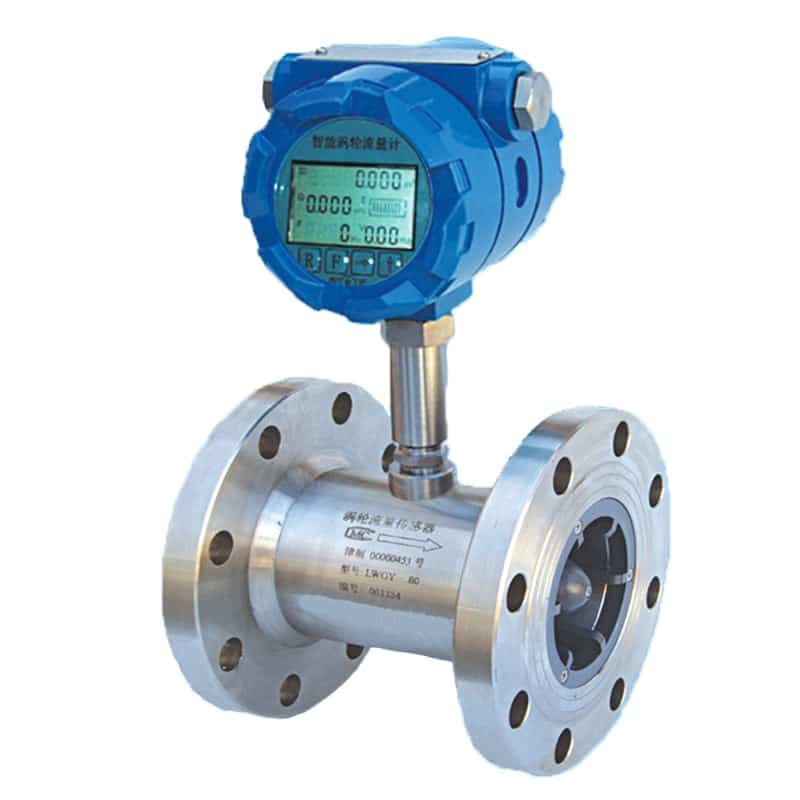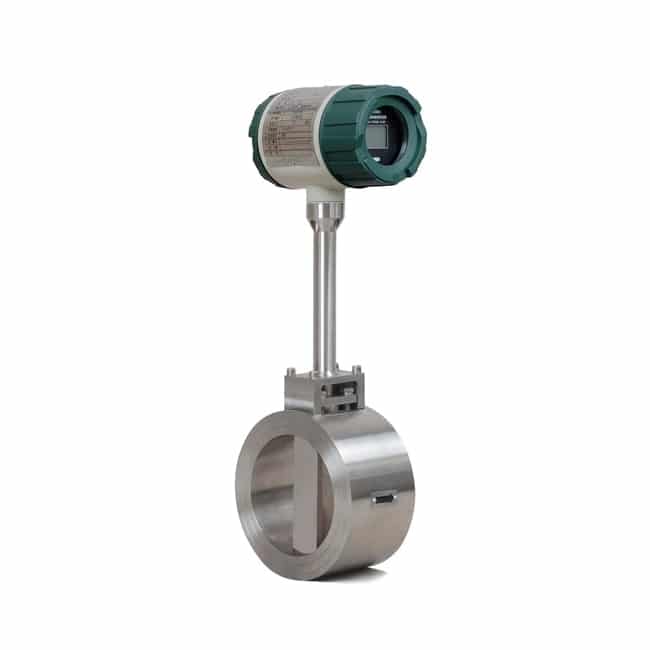Flow measurement is crucial in modern industry and the vortex flow meter is a widely used flow measurement device. It utilizes the von Kármán effect to accurately measure flow velocity and flow rate by measuring the frequency of vortices formed in the fluid.

Understanding vortex flow meters
A vortex flowmeter is a mechanical flow measurement device that utilizes the von Kármán effect, a phenomenon in which alternating vortices are formed behind a resisting fluid as the fluid passes through it, to achieve flow rate and flow volume measurements. It consists of a resisting fluid placed in a pipe, behind which vortices are formed as the fluid flows through the resisting fluid, the frequency of which is proportional to the velocity of the fluid.
Areas of application and importance
Vortex flowmeters play an important role in many industrial applications including but not limited to:
- Chemical industry: For monitoring the flow of chemicals, liquids or gases, e.g. flow measurement of various liquid media in production processes.
- Water treatment: Used to measure flow rates in areas such as tap water, wastewater treatment and industrial water, which are essential for water resource management.
- Oil & gas industry: Used to monitor flow rates in oil pipelines, natural gas pipelines and liquefied natural gas (LNG), among others, to ensure accuracy and safety of transportation.
- Food & beverage industry: Used to measure the flow of liquid ingredients in beverage and food processing to ensure production quality and efficiency.
- Energy industry: For applications in thermal energy flow measurement, such as flow monitoring of hot water, steam and warm air.
Vortex flow meters in these areas are important for production, safety and resource management. They provide accurate, stable and reliable flow data, which helps to optimize the process, safeguard product quality, improve production efficiency and ensure the safety of equipment operation. Therefore, vortex flow meters, as an important flow measurement device, play a key role in the operation and management of various industries.
The von Kármán effect
The von Kármán effect is the phenomenon of alternating vortices being created behind an object when a fluid passes over an obstructing object. In a vortex flow meter, a resisting fluid is placed in the pipe and as the fluid passes over the resisting fluid, alternating vortices are formed. The frequency of these vortices is proportional to the velocity of the fluid, which is how the von Kármán effect works in vortex flow meters.
The key factor is the design of the resisting fluid, which is usually a columnar object or winged structure that is placed in the pipe through which the fluid is flowing. When fluid flows through a resistor, the fluid forms alternating vortices on each side of the resistor, due to the alternating pressure changes that occur as the fluid passes through the object, resulting in the formation of vortices in the fluid. These vortices are generated at a certain frequency and increase as the velocity of the fluid increases.
The formation of vortices is based on the oscillatory flow of the fluid behind a resisting fluid. This oscillation causes the fluid to form alternating vortex structures in different directions. The frequency of the vortices is directly proportional to the fluid velocity, so by measuring the frequency of these vortices, the vortex flow meter can accurately calculate the fluid flow rate and flow rate. This measurement method based on vortex frequencies is the core of the vortex flowmeter operating principle.
Working principle of vortex flow meter
Vortex flowmeter composition and structure
Vortex flow meters are mainly composed of the following components:
- Pipe: The pipe through which the fluid passes, usually a round or square pipe.
- Resistor (vortex body): the obstruction placed in the center of the pipe, usually a column or wing-shaped structure. It is the core component of vortex flow meter.
- Sensor: The sensor used to detect the vortex generation, usually a sensing coil or Hall effect sensor.

Vortex flow meter flow measurement method
Relationship between vortex frequency and flow velocity
The vortex frequency (f) is proportional to the velocity of the fluid (V) and can be expressed by the following equation: f=St×V
where f is the frequency of the vortex, V is the velocity of the fluid, and St is a constant called the Strouhal number.
Vortex frequency converted to flow measurement
By measuring the frequency of a vortex, a vortex flow meter can convert the vortex frequency into a flow value. This conversion is usually accomplished by the following steps:
- Calibration: First of all, you need to calibrate the vortex flowmeter, the vortex frequency and the known flow rate or flow value for calibration.
- Flow calculation: through the known vortex frequency and calibration relationship, you can deduce the actual flow rate or flow value.
Turbine flow meters vs. vortex flow meters
| Features | Turbine Flow Meter(LWGY Liquid Turbine Flow Meter) | Vortex Flow Meter(AQT Steam Vortex Flow Meter) |
| Measurement Principle | Fluid generates pulses by passing through a rotating turbine | Fluid generates pulses by passing through a vortex shedding process |
| Accuracy | High | Medium to High |
| Applicable Range | Small to Medium flow rates | Medium to Large flow rates |
| Flow Rate Range | 0.1 to several thousand L/min | 10 to several thousand L/min |
| Response Time | Fast | Faster |
| Stability | Sensitive to liquid viscosity | Relatively insensitive |
| Applicable Fluids | Clean liquids | Clean or particle-laden liquids |
| Maintenance | Requires regular calibration and maintenance | Relatively low maintenance |


Summary
Apure provides a comprehensive range of instruments including water quality analysis, flow meter, level measurement, pressure measurement and temperature measurement, tools, alongside ozone generators. Among these, the vortex flow meter stands out, utilizing the von Kármán effect to precisely measure fluid flow by analyzing the frequency of vortices generated as fluid passes through an obstruction. This technology caters to various industrial needs, ensuring accurate and dependable flow measurement solutions. If you need help, come and consult us.
